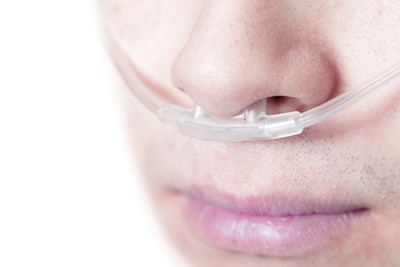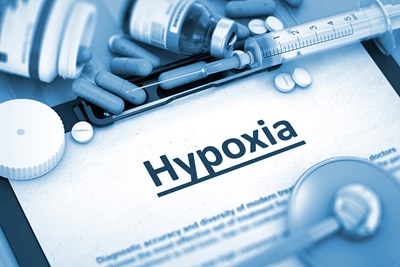Hypoxia is a medical condition that arises when your body tissues aren’t oxygenated sufficiently—this is usually the cause of an inadequate concentration of oxygen in your blood. Hypoxia can be local, affecting a specific area of your body, or generalized, affecting the whole body. If there’s a total lack of oxygen supply in your body, then the term ‘anoxia’ is used.
Signs and Symptoms
The signs and symptoms of hypoxia can depend on the severity of the condition. They can include:
- Breathlessness or shortness of breath
- Cyanosis, a condition where skin and nail beds turn bluish. This is one of the most common signs of hypoxia.
- Euphoria or feeling of dissociation from oneself
- Cognitive problems, confusion, or memory loss
- Disorientation and uncoordinated movement
- Fatigue or tiredness
- Heart palpitations—when it feels like the heart is beating quickly, skipping a beat, or fluttering. As hypoxia progresses, the heart rate may quickly drop by a significant degree. In severe cases, abnormal heart rhythms or arrhythmias may occur.
- Headaches
- Hypertension (high blood pressure) in beginning phases of hypoxia is followed by low blood pressure as the condition worsens.
- Lightheadedness
- Nausea and vomiting
Severe hypoxia is life threatening and it can result in loss of consciousness, seizures or convulsions, and coma. Breathing can slow and become shallow, and the pupils of the eyes may not be responsive to light.
Long-Term Hypoxia
In cases where people have suffered from hypoxia for a long time, swollen tips of the fingers is common. Their blood can also become concentrated with a higher number of red blood cells—this is called polycythemia.
Additional disorders in long-term hypoxia include right ventricular hypertrophy, enlargement of the heart, and chronic pulmonary hypertension, which is a rare lung condition that causes the arteries that carry blood from the heart to the lungs to narrow, making blood flow difficult and resulting in high blood pressure in these arteries.



